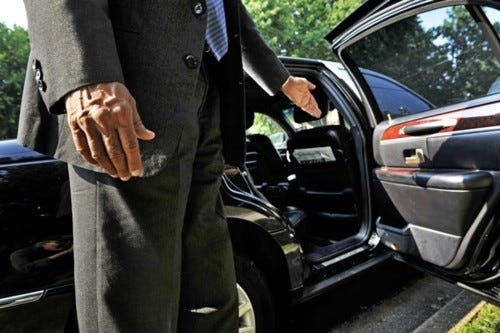Best Mobile Payments Co? @Uber.
Yeah, I know, it’s a car service. But it’s also an excellent example of what mobile payments is really about; that is, tap and go.
Sure booking your ride via iPhone with a few taps and seeing it show up on the map is pretty cool (except when it doesn’t show up and your downtown, cold, and drunk with unfortunately easy access to Twitter - sorry again fellas), but as I mentioned last month, my favorite part of the Uber (and GroundLink) experience is just getting out of the car when I’m done. No swipe. No cash. No processing. Just the inevitable, “So, we cool?” conversation with the driver. I’d already ‘opened my tab’ when I booked my car, so I could close it and pay on my phone. Automagically.
Everything we do should be this easy. And there is no reason why it won’t be.
[[MORE]]But when we think of mobile payments, we usually think of 'swiping’ our phone or using SMS. It doesn’t hurt that Google seemingly bet the Google Wallet farm on NFC (though I suspect they’ll be adjusting Wallet’s dependence/association with NFC). SMS, NFC, and, for that matter, Bluetooth, Wifi, LTE, etc. are transmission mechanisms that will make mobile payments better, but even today’s crappy cellular networks are enough to support Uber-like mobile payments. The issues for mass consumer adoption have much more to do with the user experience and merchant integration and adoption, which, again, are not necessarily dependent upon any particular sort of communications technology like NFC. (Btw, good piece on NFC hype/mobile payments here.)
The Merchant Adoption Problem
This is the single biggest (and most obvious) problem for all of the mobile payments platforms. Very few merchants take mobile payments. Sure Square is all the rage and their dongles are popping up everywhere, but I’ve only been to one merchant in NYC that takes their CardCase mobile payments app, which, for the record, is very cool. This will change over time, especially as they give free readers to everyone (reader=trojan horse). Square looks to be integrating at the transaction processing layer (hello, Verifone), pretty much the bottom and foundation of the stack. That could enable them to do some pretty incredible things later (SKU-level data, deals, promotions, apps, etc.) I suppose that’s why investors believe it’s worth billions.
Alternatively, TabbedOut has focused on point-of-sale technology integration, which, with their partners theoretically gives them the ability to reach ~85% of POS terminals at bars and restaurants in the US. And LevelUp opted for a lighter installation route with no merchant systems integration - just an iPhone/iPad. Regardless of approach, this 'coverage’ problem will go away eventually.
The User Experience Problem
The other problem is that users don’t necessarily know or remember to use a mobile payments app to start (or finish) their tab. It’s not typical behavior - you’re way more likely to throw down your credit card to start a tab and/or close out your bill. This is why I believe foursquare is the more likely home for where mobile payments happen at local merchants. Foursquare’s user experience starts at check-in (and can start even earlier when using Explore). The company gives users a bunch of reasons to 'connect’ to the local merchant before payment, whether it’s the foursquare game, reading tips and menus, or sharing whereabouts with friends. This seems to me the correct entry point for the user to be asked, “Hey, wanna open a tab at the place you’re at?”
This does not mean that Square, TabbedOut, LevelUp, and the dozens of other mobile payments companies won’t be successful. Partnering/M&A with foursquare (fivesquare!) and its brethren or building experiences that grab the user earlier in the process are likely scenarios.
More Revenue + Lower Cost = More Profits
The implications of the entire world moving to this type of interaction are, clearly, profound. This should increase revenue/turnover (faster tables, impulse buying, price dissociation, etc.) and decrease costs (fewer staff, etc.) Thomas Friedman touched on the cost reduction side of this story in yesterday’s NYTimes while discussing E La Carte, an MIT engineer-built platform that lets restaurant customers order and pay on a specially designed tablet (hey guys, everyone in the US has a cellphone - I’ve got two).
It will also be interesting to watch how the existing banks and payments companies (American Express, Visa, Mastercard, etc.) compete for what had traditionally been called 'share of wallet.’ Now that the wallet and all of the cards in it are condensed down to an app on the phone, making sure those payments accounts (be they foursquare, Square, TabbedOut, or something else) default to Amex/etc. will be critical.
No matter how it all plays out, I have little doubt that the experience will end up working something like this: after finding/booking (see here for the complete value chain), you get to the restaurant, check-in, open your tab, order, eat/drink, check-out (i.e., pay/close your bill), and just leave. If you like, you can even find a waitress and say, “So, we cool?”





